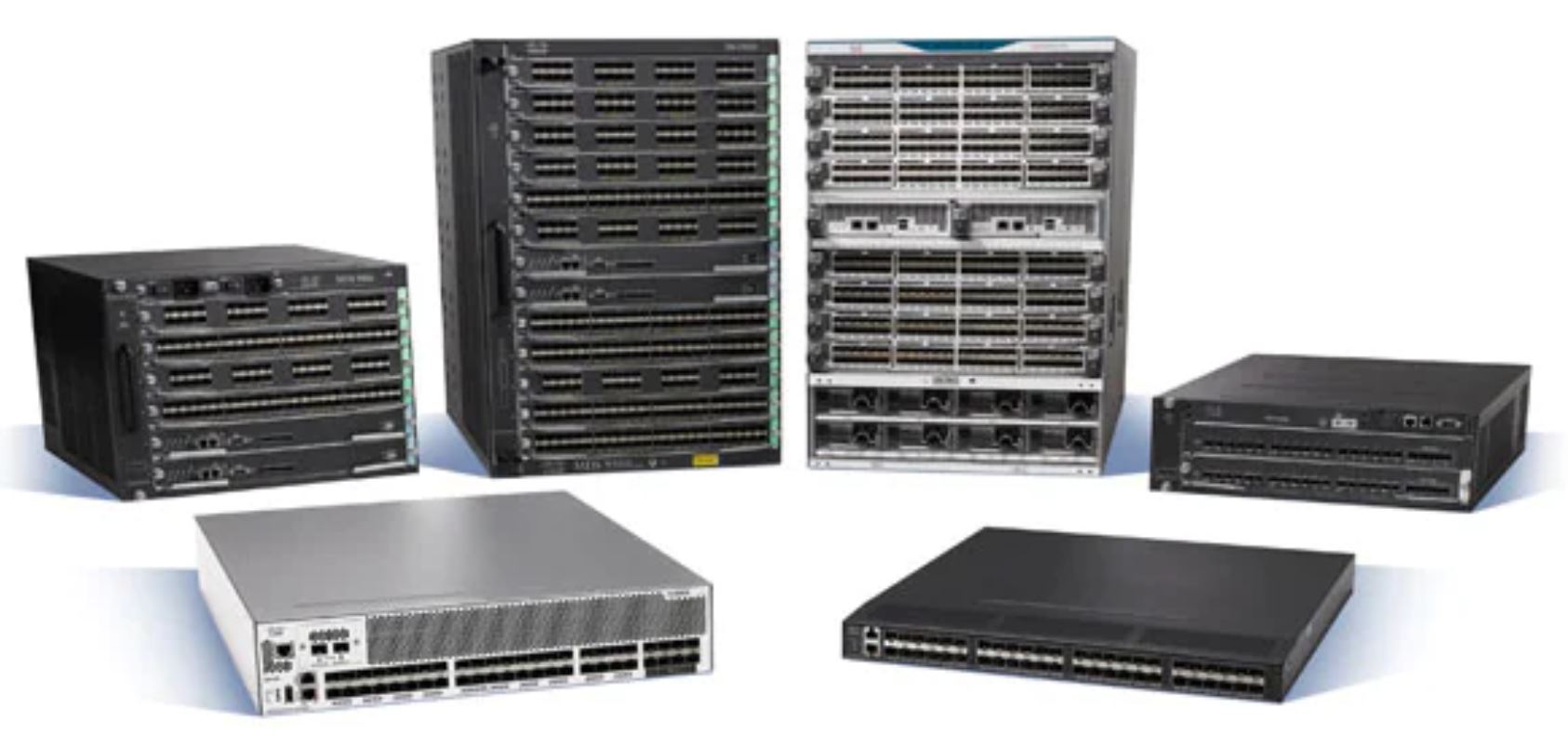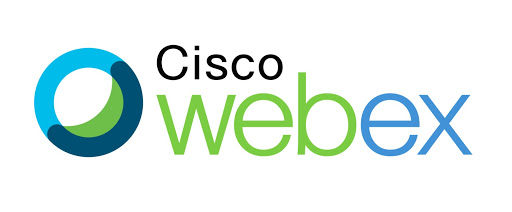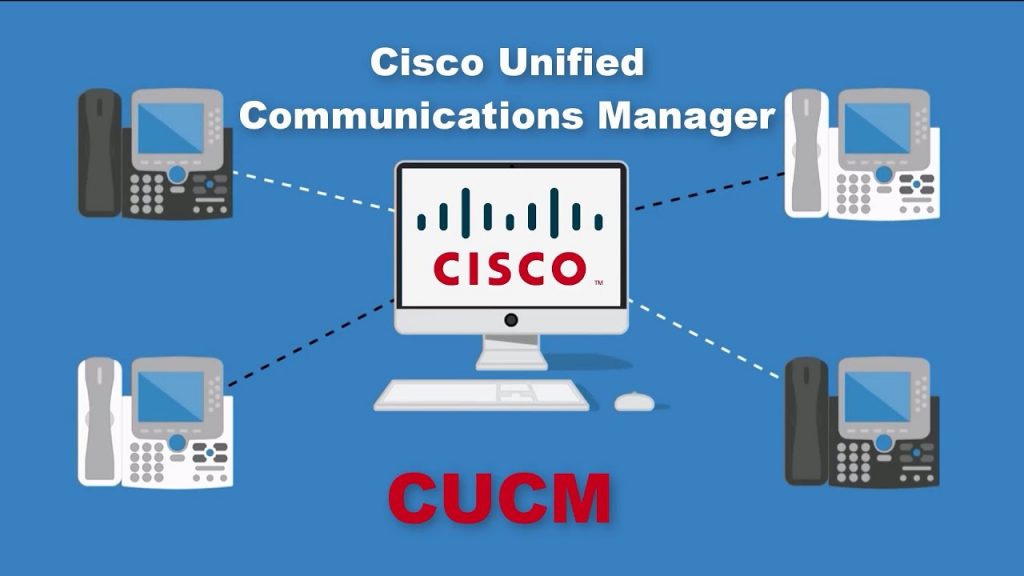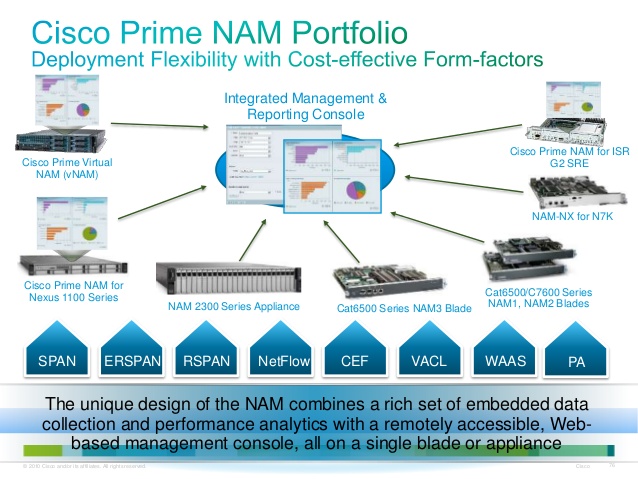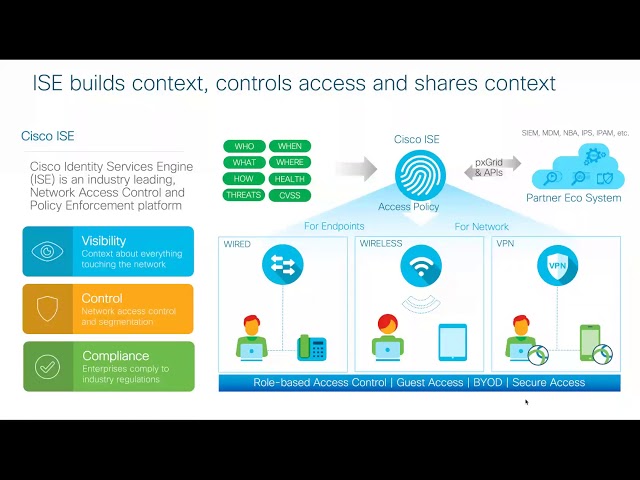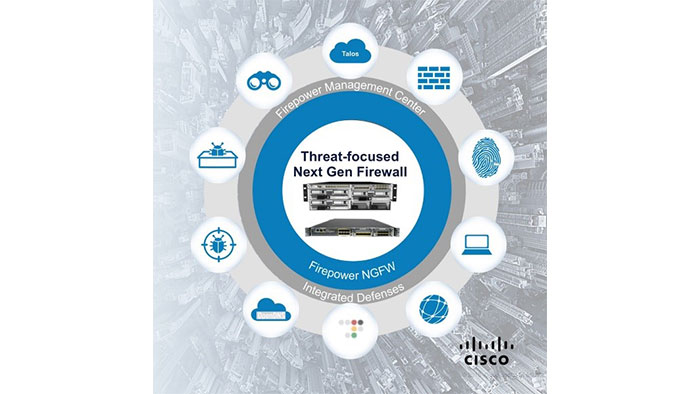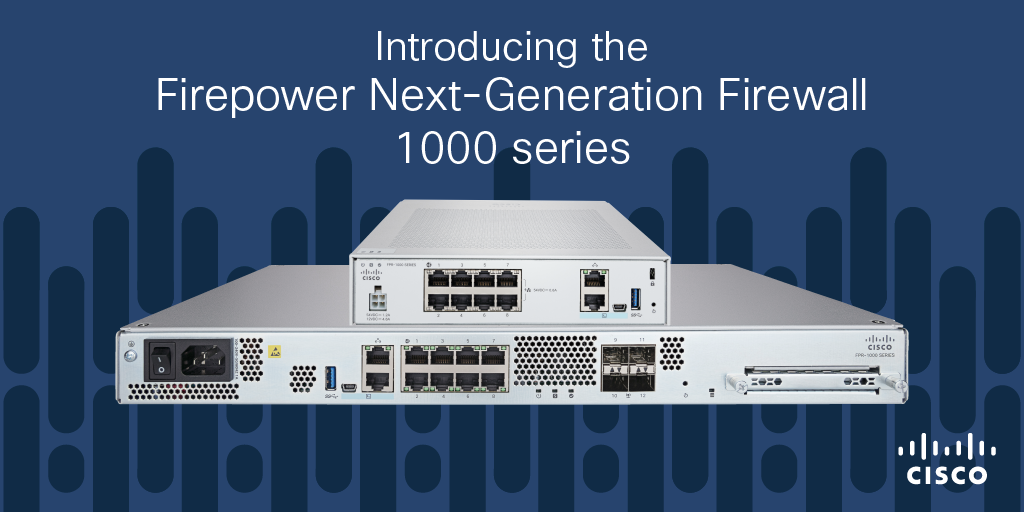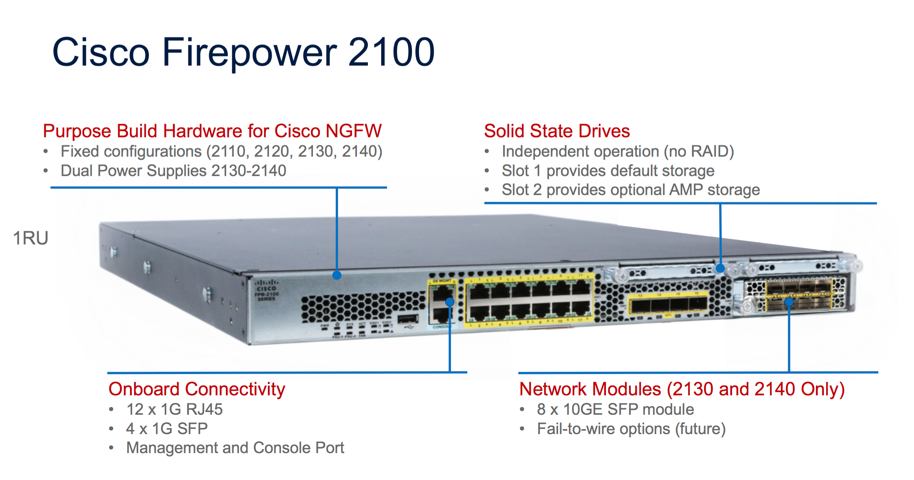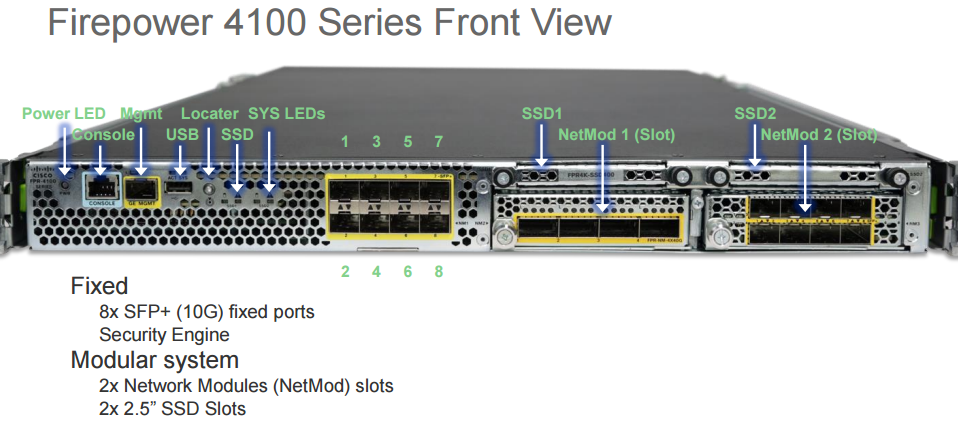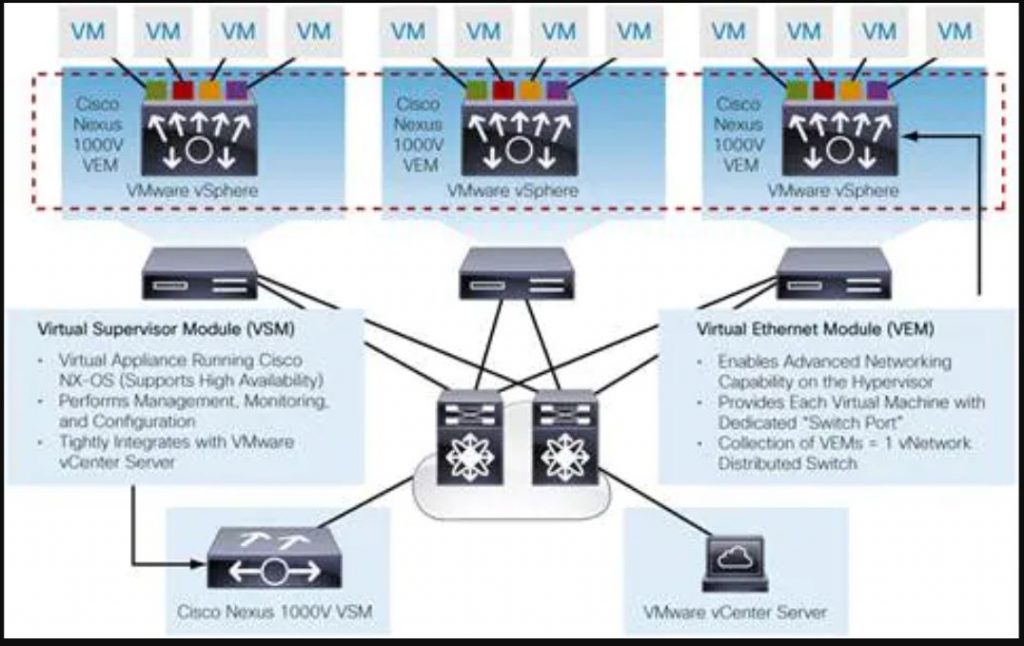سری CDS MDS 9100 استاندارد سوئیچ های فابریک کانال فیبر را افزایش می دهد و باعث می شود شبکه هوشمند سیسکو به SAN و مقیاس کوچک و برنامه های لبه مرکز داده برسد. سری CDS MDS 9100 تعادل ایده آل هزینه ، عملکرد و ویژگی های کلاس سازمانی را در یک فاکتور جمع و جور 1RU فراهم می کند. سری CDS MDS 9100 که در تنظیمات 20 و 40 پورت موجود است ، تراکم پورت مورد نیاز برای طیف گسترده ای از محیط های ذخیره سازی را ارائه می دهد. ارائه مقیاس پذیری ، در دسترس بودن ، امنیت و مدیریت کلاس پیشرو ، سری CDS MDS 9100 کاربران را قادر می سازد SAN های با کارایی بالا با TCO پایین را به کار گیرند. با قرار دادن مجموعه ای غنی از ویژگی های هوشمند بر روی یک سکوی سوئیچینگ با مشخصات اقتصادی کوچک و مقرون به صرفه ، سری CDS MDS 9100 به هزینه ، عملکرد ، سهولت مدیریت پاسخ می دهد ،
بهینه سازی اتصال
سوئیچ های Cisco MDS 9100 Series با تطبیق عملکرد پورت سوئیچ با نیاز دستگاه های متصل ، اتصال را بهینه می کنند. درگاه های بهینه سازی شده هدف به گونه ای تنظیم شده اند که خواسته های پهنای باند دستگاه های ذخیره سازی با کارایی بالا ، سرورها و پیوندهای بین سوئیچ (ISL) را برآورده کنند. پورت های بهینه شده میزبان بهترین تراکم پورت در کلاس و پهنای باند بهینه را برای پیوست میزبان ارائه می دهند. سوئیچ مدل Cisco MDS 9120 با 16 پورت بهینه سازی میزبان و 4 پورت بهینه سازی هدف پیکربندی شده است. سوئیچ مدل Cisco MDS 9140 با 32 پورت بهینه سازی میزبان و 8 پورت بهینه سازی هدف پیکربندی شده است. سوئیچ های Cisco MDS 9100 Series شامل رابط های قابل تغییر داغ ، شکل کوچک با شکل پلاگین (SFP) ، LC هستند. پورت های جداگانه را می توان با اتصال موج کوتاه یا بلند SFP به ترتیب برای اتصال تا 500 متر و 10 کیلومتر پیکربندی کرد. مالتی پلکسینگ در دسترس طول موج درشت (CWDM) SFP از تجمع پیوندهای متعدد به یک فیبر نوری واحد از طریق یک مولتی پلکسر نوری منفی ، منفعل ، و چند محلولی پشتیبانی می کند. همه رابط ها با 2 گیگابیت بر ثانیه سازگار هستند. حداکثر 255 اعتبار بافر برای هر پورت در درگاههای بهینه سازی شده برای هدف برای حداکثر قابلیت توسعه بدون نیاز به مجوزهای اضافی پشتیبانی می شود. درگاه های بهینه سازی شده میزبان از 12 اعتبار بافر در هر پورت پشتیبانی می کنند.
● دو گزینه – تنظیمات بیست و چهل پورت (سیسکو MDS 9120 ، MDS 9140) ، بسته بندی شده در یک شاسی یک رک (1RU) شاسی با دو منبع تغذیه قابل تعویض داغ و فن ، انعطاف پذیری لازم برای رفع طیف گسترده ای از نیازهای استقرار
در شکل های 1 و 2 سوئیچ های پارچه ای سری CDS MDS 9100 نشان داده شده است. این سوئیچ ها ویژگی های هوشمند را بر روی یک فاکتور فرم جمع و جور مقرون به صرفه قرار می دهند.
Cisco MDS 9100 Series – ساخت پارچه های هوشمند مقرون به صرفه
مدیریت ترافیک پیشرفته برای پارچه های با انعطاف پذیری با کارایی بالا
قابلیت های پیشرفته مدیریت ترافیک که در سری CDS MDS 9100 ادغام شده اند استقرار و بهینه سازی پارچه های بزرگ را ساده می کند.
● خروجی مجازی صف تضمین عملکرد نرخ خط در هر پورت، مستقل از الگوی ترافیک، با از بین بردن سر از خط مسدود کردن.
5 255 اعتبار بافر به بافر برای استفاده بهینه از پهنای باند از راه دور به هر پورت اختصاص داده شده است. در صورت نیاز به مسافت های طولانی ، حداکثر 3500 اعتبار می تواند به یک پورت واحد در یک گروه چهار درگاه فیبر کانال اختصاص یابد.
● PortChannels به کاربران امکان می دهد تا حداکثر 15 ISL فیزیکی را در یک بسته منطقی واحد جمع کنند و استفاده بهینه از پهنای باند را در تمام پیوندها ارائه دهند. بسته نرم افزاری می تواند از هر درگاهی از هر ماژول در شاسی تشکیل شود ، اطمینان حاصل شود که بسته نرم افزاری حتی در صورت خرابی ماژول نیز فعال است.
● پارچه کوتاهترین مسیر اول (FSPF) مبتنی بر multipathing فراهم می کند اطلاعات به تعادل بار در سراسر تا 15 مسیر هزینه برابر و در صورت شکست سوئیچ، ترافیک به صورت پویا.
● از کیفیت خدمات (QoS) می توان برای مدیریت پهنای باند و کنترل تأخیر ، به منظور اولویت بندی ترافیک مهم استفاده کرد.
● ازدحام فیبر کانال کنترل (FCC)، یک مکانیزم کنترل ازدحام پایان به پایان مبتنی بر بازخورد، موجب افزایش بافر به بافر مکانیزم های اعتباری کانال فیبر برای ارائه مدیریت ترافیک افزایش یافته است.
ویژگی ها و مزایای اصلی
Highlights
● Cost-effective, intelligent storage networking – Advanced features in a compact, cost-effective design simplify deployment and administration of small and medium-scale storage-area networks (SANs).
● Scalability and consistent service delivery – Common platform architecture and intelligent services across all Cisco® MDS 9000 Family switches ensures scalability and consistent service delivery as your SAN grows.
● Simplified storage management – The Cisco MDS 9100 Series includes built-in storage network management with all features available through a command-line interface (CLI) or Cisco Fabric Manager, a centralized management tool that simplifies management of multiple switches and fabrics.
● Intelligent network services: Introduces Virtual SAN (VSAN) technology for hardware-enforced, isolated environments within a single physical fabric; Access Control Lists (ACLs) for hardware-based intelligent frame processing; and advanced traffic management features such as Fibre Channel Congestion Control (FCC) and fabricwide QoS to enable migration from SAN islands to enterprise-wide storage networks.
● Total cost of ownership (TCO)-driven design – The Cisco MDS 9100 Series offers advanced management tools for overall lowest TCO. VSAN technology for hardware-enforced, isolated environments within a single physical fabric for secure sharing of physical infrastructure further decreases TCO.
● Comprehensive security framework – Supports RADIUS and TACACS+, FC-SP, SFTP, SSH and SNMPv3 implementing Advanced Encryption Standard (AES), VSANs, hardware-enforced zoning, Access Control Lists, and per-VSAN role-based access control.
● Sophisticated diagnostics – This feature provides industry-first intelligent diagnostics, protocol decoding, and network-analysis tools as well as integrated call-home capability for added reliability, faster problem resolution, and reduced service costs.
● Industry-leading port density – Up to forty 2/1-Gbps autosensing Fibre Channel ports are incorporated in a compact design for environments that require maximum port density per rack unit.
● Two options – Twenty- and forty-port configurations (Cisco MDS 9120, MDS 9140), packaged in a one rack unit (1RU) form-factor chassis with dual hot-swappable power supplies and fans, provide the flexibility needed to address a broad range of deployment requirements.
Figures 1 and 2 show the Cisco MDS 9100 Series Fabric Switches. These switches layer intelligent features onto a cost-effective compact form factor.
Cisco MDS 9100 Series – Building Cost-Effective Intelligent Fabrics
The Cisco MDS 9100 Series elevates the standard for Fibre Channel fabric switches, bringing Cisco Intelligent Networking to small and medium-scale SANs and data-center edge applications. The Cisco MDS 9100 Series provides the ideal balance of cost, performance, and enterprise-class features in a compact 1RU form factor. Available in 20- and 40-port configurations, the Cisco MDS 9100 Series offers the port densities required for a wide variety of storage environments. Providing class-leading scalability, availability, security, and management, the Cisco MDS 9100 Series enables users to deploy high-performance SANs with low TCO. Layering a rich set of intelligent features onto a cost-effective, small-profile switching platform, the Cisco MDS 9100 Series addresses the cost, performance, ease of management, and connectivity requirements of small and medium-scale storage environments and provides full-feature compatibility with Cisco MDS 9500 Series Multilayer Directors and the Cisco MDS 9200 Series Multilayer Fabric Switches for transparent, end-to-end service delivery in large data-center core-edge deployments.
Optimized Connectivity
Cisco MDS 9100 Series switches optimize connectivity by matching switch-port performance to the requirements of connected devices. Target-optimized ports are configured to meet the bandwidth demands of high-performance storage devices, servers, and Inter-Switch Links (ISLs). Host-optimized ports deliver best-in-class port density and optimal bandwidth for host-attach. The Cisco MDS 9120 model switch is configured with 16 host-optimized ports and 4 target-optimized ports. The Cisco MDS 9140 model switch is configured with 32 host-optimized ports and 8 target-optimized ports. Cisco MDS 9100 Series switches include hot-swappable, Small Form-Factor Pluggable (SFP), LC interfaces. Individual ports can be configured with either short- or long-wavelength SFPs for connectivity up to 500m and 10 km, respectively. Available coarse wavelength-division multiplexing (CWDM) SFPs support aggregation of multiple links onto a single optical fiber through a low-cost, passive, optical multiplexer/demultiplexer. All interfaces are 2 Gbps compatible. Up to 255 buffer credits per port are supported on target-optimized ports for maximum extensibility without the requirement for additional licensing. Host-optimized ports support 12 buffer credits per port.
Advanced Traffic Management for High-Performance, Resilient Fabrics
Advanced traffic management capabilities integrated into the Cisco MDS 9100 Series simplify deployment and optimization of large-scale fabrics.
● Virtual Output Queuing ensures line rate performance on each port, independent of traffic pattern, by eliminating head-of-line blocking.
● 255 Buffer-to-Buffer credits are assigned to each port for optimal bandwidth utilization across distance. When extended distances are required, up to 3,500 credits can be allocated to a single port within a group of four Fibre Channel ports.
● PortChannels allow users to aggregate up to 15 physical ISLs into a single logical bundle, providing optimized bandwidth utilization across all links. The bundle can consist of any port from any module in the chassis, ensuring that the bundle remains active even in the event of a module failure.
● Fabric Shortest Path First (FSPF)-based multipathing provides the intelligence to load balance across up to 15 equal cost paths and, in the event of a switch failure, dynamically reroute traffic.
● Quality of Service (QoS) can be used to manage bandwidth and control latency, in order to prioritize critical traffic.
● Fibre Channel Congestion Control (FCC), an end-to-end feedback-based congestion control mechanism, augments the Fibre Channel’s Buffer-to-Buffer credit mechanism to provide enhanced traffic management.
Key Features and Benefits
VSANs and INTER-VSAN Routing Enhance Security and Stability
VSANs allow more efficient storage network utilization by creating hardware-based isolated environments within a single physical SAN fabric or switch. Each VSAN can be zoned as a typical SAN and maintains its own fabric services for added scalability and resilience. VSANs allow the cost of SAN infrastructure to be shared among more users, while assuring absolute segregation of traffic and retaining independent control of configuration on a VSAN-by-VSAN basis.
The Cisco MDS 9100 Series supports Inter-VSAN Routing (IVR), the industry’s first routing functionality for Fibre Channel. IVR allows selective transfer of data traffic between specific initiators and targets on different VSANs while maintaining isolation of control traffic within each VSAN. With IVR, data can transit VSAN boundaries while maintaining control plane isolation, thereby maintaining fabric stability and availability.
Smart Zoning: When the Smart Zoning feature is enabled, Cisco MDS 9000 Family fabrics provision the hardware access control entries specified by the zone set more efficiently, avoiding the superfluous entries that would allow servers (initiators) to talk to other servers, or allow storage devices (targets) to talk to other storage devices. This feature makes larger zones with multiple initiators and multiple targets feasible without excessive consumption of hardware resources. Thus, smart zones can correspond to applications, application clusters, hypervisor clusters, or other data center entities, saving the time that administrators previously spent creating many small zones, and enabling the automation of zoning tasks.
Industry’s Most Advanced Diagnostics and Troubleshooting Tools
Management of large-scale storage networks requires proactive diagnostics, tools to verify connectivity and route latency, and mechanisms for capturing and analyzing traffic. The Cisco MDS 9000 Family integrates the industry’s most advanced analysis and debug tools. Power-on self test (POST) and online diagnostics provide proactive health monitoring. Cisco MDS 9100 Series provides the integrated hardware functionality required to implement diagnostic capabilities such as FC Traceroute for detailing the exact path and timing of flows and Switched Port Analyzer (SPAN) to intelligently capture network traffic. Once traffic has been captured, it can then be analyzed with the Cisco Fabric Analyzer, an embedded Fibre Channel analyzer. Comprehensive port and flow-based statistics enable sophisticated performance analysis and service level agreement (SLA) accounting. With the MDS 9000 Family, Cisco delivers the most comprehensive toolset for troubleshooting and analysis of an organization’s storage network.
Comprehensive Solution for Robust Security
Recognizing the need for airtight security in storage networks, the Cisco MDS 9100 Series offers an extensive security framework to protect highly sensitive data crossing today’s enterprise networks. The Cisco MDS 9100 Series employs intelligent packet inspection at the port level, including the application of ACLs for hardware enforcement of Zones, VSANs, and advanced Port Security features.
Extended zoning capabilities are enabled to ensure that LUNs are accessible only by specific hosts (LUN zoning), to limit SCSI read command for a certain zone (read-only zoning), and to restrict broadcasts to only the selected zones (broadcast zones). VSANs are used to achieve higher security and greater stability by providing complete isolation among devices that are connected to the same physical SAN. In addition, Fibre Channel Security Protocol (FC-SP) provides switch-switch and host-switch DH-CHAP authentication supporting RADIUS or TACACS+, to ensure that only authorized devices access protected storage networks.
This functionality, in conjunction with management access and control plane security, makes the Cisco MDS 9000 Family the most secure platform of its kind.
Availability
The Cisco MDS 9100 Series was designed for class-leading availability. Hot-swappable, redundant fans and power supplies and the unique ability to automatically restart failed supervisor processes combine to define a new standard for fabric switch availability. High availability is implemented at the fabric level through the industry’s most robust and highest-performance ISLs. PortChannel capability allows users to aggregate up to 15 physical links (Cisco MDS 9140) into one logical bundle. The bundle can sustain the failure of any physical link without causing a reset. Additionally, Fabric-Shortest-Path-First (FSPF) multipathing provides the intelligence to load balance across up to 15 equal cost paths (Cisco MDS 9140) and, if a switch fails, to dynamically reroute traffic. The Cisco MDS 9100 Series takes fabric-switch availability to a new level, minimizing TCO.
Ease of Management
Delivering on the promise of SANs means delivering on management capabilities. To meet the needs of all users, the Cisco MDS 9100 Series provides three principal modes of management: Cisco MDS 9000 Family CLI, Cisco Fabric Manager, and integration with third-party storage management tools. The Cisco MDS 9100 Series presents the user with a consistent, logical CLI. Adhering to the syntax of the widely known Cisco IOS® CLI, the Cisco MDS 9000 Family CLI is easy to learn and delivers broad management functionality. The Cisco MDS 9000 Family CLI is an extremely efficient and direct interface designed to provide optimal functionality to administrators in enterprise environments. Cisco Fabric Manager is a responsive, easy-to-use Java application that simplifies management across multiple switches and fabrics. Cisco Fabric Manager enables administrators to perform vital tasks such as topology discovery, fabric configuration and verification, provisioning, monitoring, and fault resolution. All functions are available through a secure interface, which enables remote management from any location. Cisco Fabric Manager may be used independently or in conjunction with third-party management applications. Cisco provides an extensive API for integration with third-party and user-developed management tools.
Specifications
Performance and Port Configurations
● Port speed – 1/2-Gbps autosensing, optionally configurable
● Buffer credits – Up to 255 per port (target-optimized ports); 12 per port (host-optimized ports)
● Ports per chassis – 20 (Cisco MDS 9120); 40 (Cisco MDS 9140)
● Port configuration – 16 host-optimized ports, 4 target-optimized ports (Cisco MDS 9120); 32 host-optimized ports, 8 target-optimized ports (Cisco MDS 9140)
● Ports per rack – 1680 1/2-Gbps Fibre Channel ports (Cisco MDS 9140)
● PortChannel – Up to 7 ports (Cisco MDS 9120); up to 15 ports (Cisco MDS 9140)
Supported Optics, Media, and Transmission Distances
Table 1 summarizes the interfaces and distances supported by the Cisco MDS 9100 Series switches.
Table 1. Interfaces and Distances Supported by Cisco MDS 9100 Series Switches
|
Fibre Channel Optics |
Media |
Distance |
|
1-Gbps – SW, LC SFP |
50-/125-micron multimode |
500m |
|
1-Gbps – SW, LC SFP |
62.5-/125-micron multimode |
300m |
|
1-Gbps – LW, LC SFP |
9-/125-micron single mode |
10 km |
|
1-Gbps – CWDM, LC SFP |
9-/125-micron single mode |
Up to 100 km |
|
2-Gbps – SW, LC SFP |
50-/125-micron multimode |
300m |
|
2-Gbps – SW, LC SFP |
62.5-/125-micron multimode |
150m |
|
2-Gbps – LW, LC SFP |
9-/125-micron single mode |
10 km |
|
2-Gbps – CWDM, LC SFP |
9-/125-micron single mode |
Up to 100 km |
Security
● VSANs
● Zoning
– N_Port WWN
– N_Port FC-ID
– Fx_Port WWN
● FC-SP
● Management access
– SSH v2
– SNMP v3
Minimum Software Requirement
● SAN-OS Release 1.2(1)
Compatibility
● Fibre Channel protocols
– FC-PH, Revision 4.3
– FC-PH-2, Revision 7.4
– FC-PH-3, Revision 9.4
– FC-GS-2, Revision 5.3
– FC-GS-3, Revision 7.01
– FC-FLA, Revision 2.7
– FC-FG, Revision 3.5
– FC-SW-2, Revision 5.3
– FC-AL, Revision 4.5
– FC-AL-2, Revision 7.0
– FC-PLDA, Revision 2.1
– FC-VI, Revision 1.61
– FCP, Revision 12
– FCP-2, Revision 7a
– FC-SB-2, Revision 2.1
– FC-BB, Revision 4.7
– FC-FS, Revision 1.9
– FC-PI, Revision 13
– FC-MI, Revision 1.99
– FC-Tape, Revision 1.17
● IP over Fibre Channel (RFC 2625)
● Extensive IETF-standards-based TCP/IP, SNMP v3, and Remote Monitoring (RMON) MIBs
● Class of service: Class 2, Class 3, Class F
– Fibre Channel standard port types: E, F, FL
– Fibre Channel enhanced port types: SD, ST, TE, TL
Fabric Services
● Name server
● Registered State Change Notification (RSCN)
● Login services
● Private loop
● Public loop
● Translative loop
● Broadcast
● In-order delivery
● Name-server zoning
Diagnostics and Troubleshooting Tools
● Power-on self test (POST) diagnostics
● Online diagnostics
● Internal loopbacks
● SPAN, RSPAN
● FC Traceroute capability
● Fibre Channel Ping
● Fibre Channel Debug
● Cisco Fabric Analyzer
● Syslog
● Online system health
● Port-level statistics
Management
● Access methods
– Out-of-band 10/100 Ethernet port
– EIA/TIA-232 serial console port
– In-band IP over Fibre Channel
● Access protocols
– CLI – Through console and Ethernet ports
– SNMPv3 – Through Ethernet port and in-band IP-over-Fibre Channel access
● Security
– Role-based access control using RADIUS-based authentication, authorization, and accounting (AAA) functions
– VSAN-based roles
– SSHv2
– SNMPv3
● Management applications
– Cisco MDS 9000 Family CLI
– Cisco Fabric Manager
– CiscoWorks 2000 Resource Manager Essentials
Availability
● Stateful process restart
● Per-VSAN fabric services
● Hot-swappable 1+1 redundant power
● Hot-swappable 1+1 fan trays
● Hot-swappable SFP optics
● PortChannels (up to 7 ports for Cisco MDS 9120; up to 15 ports for Cisco MDS 9140)
● Fabric-based multipathing
● Online diagnostics
Serviceability
● Configuration file management
● Call home
● Port beaconing
● System LEDs
● SNMP traps for alerts
Environmental
● Temperature, ambient operating: -32 to 104°F (0 to 40°C)
● Temperature, ambient nonoperating, and storage: -40 to 158°F (-40 to 70°C)
● Humidity (RH), ambient (noncondensing) operating: 10 to 90%
● Humidity (RH), ambient (noncondensing) nonoperating, and storage: 5 to 95%
● Altitude, operating: Sea level to 6500 ft (2000m)
● Dimensions (H x W x D) 1.75 x 17.2 x 23.1 in. (4.45 x 43.7 x 58.7 cm) – 1RU
– Rack-mountable in standard 19-in. EIA rack
● Weight: Fully configured chassis: 25 lb (11.4 kg)
Power and Cooling
● Power supplies (300 WAC) (two per chassis)
– Input: 100-240 VAC nominal (±10% for full range)
12A maximum
50-60 Hz nominal (±3 Hz for full range)
– Output: 300W (100 VAC @ 12A)
300W (200 VAC @ 12A)
● Airflow
– 250 linear feet per minute (lfm) average system velocity and 42 cubic feet per minute (cfm) total flow through system
– Front to rear air flow
Safety Compliance
● CE Marking
● UL 60950
● CAN/CSA-C22.2 No. 60950
● EN 60950
● IEC 60950
● TS 001
● AS/NZS 3260
● IEC60825
● EN60825
● 21 CFR 1040
EMC Compliance
● FCC Part 15 (CFR 47) Class A
● ICES-003 Class A
● EN 55022 Class A
● CISPR 22 Class A
● AS/NZS 3548 Class A
● VCCI Class A
● EN 55024
● EN 50082-1
● EN 61000-6-1
● EN 61000-3-2
● EN 61000-3-3
Ordering Information
Table 2 gives ordering information for the Cisco MDS 9100 Multilayer Fabric Switch.
Table 2. Ordering Information for Cisco MDS 9100 Multilayer Fabric Switch
|
Part Number |
Description |
|
DS-C9120-K9 |
Cisco MDS 9120 20-Port Multilayer Intelligent Fabric Switch |
|
DS-C9140-K9 |
Cisco MDS 9120 40-Port Multilayer Intelligent Fabric Switch |
|
Advanced Software Packages |
|
|
M9100ENT1K9 |
Cisco MDS 9100 Series Enterprise Package |
|
M9100FMS1K9 |
Cisco MDS 9100 Series Fabric Manager Server Package |
|
SFPs |
|
|
DS-SFP-FC-2G-SW |
1/2-Gbps Fibre Channel-SW, SFP, LC |
|
DS-SFP-FC-2G-LW |
1/2-Gbps Fibre Channel-LW, SFP, LC |
|
DS-SFP-FCGE-SW |
1-Gbps Ethernet and 2-Gbps Fibre Channel-SW, SFP, LC |
|
DS-SFP-FCGE-LW |
1-Gbps Ethernet and 2-Gbps Fibre Channel-LW, SFP, LC |
|
Spare Components |
|
|
DS-CAC-300W= |
Cisco MDS 9100 Series Power Supply, 300 WAC (spare) |
|
DS-1RU-FAN= |
Cisco MDS 9100 Series Fan Tray (spare) |
|
DS-SFP-FC-2G-SW= |
1/2-Gbps Fibre Channel-SW, SFP, LC (spare) |
|
DS-SFP-FC-2G-LW= |
1/2-Gbps Fibre Channel-LW, SFP, LC (spare) |
|
DS-SFP-FCGE-SW= |
1-Gbps Ethernet and 2-Gbps Fibre Channel-SW, SFP, LC (spare) |
|
DS-SFP-FCGE-LW= |
1-Gbps Ethernet and 2-Gbps Fibre Channel-LW, SFP, LC (spare) |
|
DS-CWDM-1470= |
1470 NM CWDM Gigabit Ethernet and 2-Gbps Fibre Channel SFP, (spare) |
|
DS-CWDM-1490= |
1490 NM CWDM Gigabit Ethernet and 2-Gbps Fibre Channel SFP, (spare) |
|
DS-CWDM-1510= |
1510 NM CWDM Gigabit Ethernet and 2-Gbps Fibre Channel SFP, (spare) |
|
DS-CWDM-1530= |
1530 NM CWDM Gigabit Ethernet and 2-Gbps Fibre Channel SFP, (spare) |
|
DS-CWDM-1550= |
1550 NM CWDM Gigabit Ethernet and 2-Gbps Fibre Channel SFP, (spare) |
|
DS-CWDM-1570= |
1570 NM CWDM Gigabit Ethernet and 2-Gbps Fibre Channel SFP, (spare) |
|
DS-CWDM-1590= |
1590 NM CWDM Gigabit Ethernet and 2-Gbps Fibre Channel SFP, (spare) |
|
DS-CWDM-1610= |
1610 NM CWDM Gigabit Ethernet and 2-Gbps Fibre Channel SFP, (spare) |

